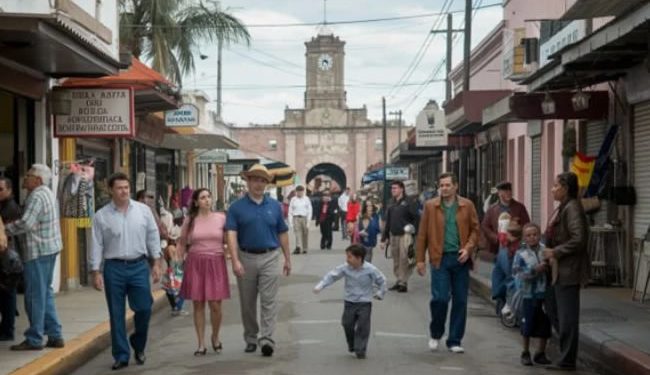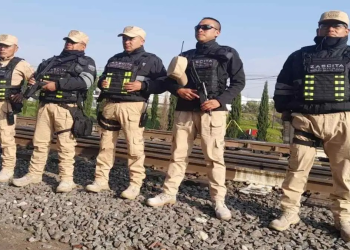Análisis de la crisis migratoria en México y sus consecuencias sociales y económicas. Veamos los desafíos y las posibles soluciones.
Brand Studio
Mexico has been at the heart of a migration crisis for many years, which has significantly impacted its social and economic systems. As migration flows move through the country toward the United States, both the government and society face ongoing challenges. Similar to the gaming industry, where each action leads to different outcomes, addressing the migration crisis in Mexico requires a strategic approach to minimize risks. For example, the approach of Pin Up Casino in managing challenges and using technology for efficiency serves as a noteworthy parallel. This article examines the key social and economic consequences Mexico faces as a result of this migration crisis.
Social Consequences of the Migration Crisis
The migration crisis has substantially affected Mexico’s social structure. Every day, thousands of immigrants arrive, putting pressure on public services, healthcare, security, and social support systems.
- Overburdened Social Infrastructure
The substantial influx of migrants strains public institutions. Hospitals, schools, and social care centers struggle to meet basic service needs. Local communities are forced to share their limited resources, leading to social tensions and increased inequality. - Rising Homelessness and Marginalization
Many migrants face barriers to securing legal employment and temporary housing, which results in a rising number of homeless and marginalized groups. This also worsens the crime rate in certain regions. - Changing Public Perception of Migrants
Despite Mexico’s own history as a high-migration country, attitudes toward Central American and other foreign migrants have shifted negatively. Concerns over job competition, declining living standards, and rising crime contribute to this shift.
Economic Consequences of the Migration Crisis
The economic impact of the migration crisis in Mexico is complex. While migration offers potential economic benefits, it also imposes significant financial and administrative costs.
- Growth of the Informal Economy
Many immigrants, lacking legal status, work in the informal economy. This results in poor working conditions for migrants and significant tax revenue losses, exacerbating economic disparity. - Border Control and Migration Policy Costs
The Mexican government allocates significant resources to border security and migration centers. These costs continue to rise with increasing migration flows, creating further strain on public budgets. - Economic Contributions by Migrants
On the positive side, migrants contribute to various sectors, from agriculture to construction, accepting jobs that may not interest local workers. In some regions, the migrant labor force is essential for economic growth in specific industries.
According to BBC, migrant labor supports the economy in various Mexican regions, proving beneficial to certain industries.
Governmental Measures
The Mexican government strives to balance migrant rights with the protection of local citizens’ welfare. Recent years have seen the implementation of several programs to assist immigrants and strengthen border controls.
- Establishment of Migration Centers
New migration centers across the country offer basic living conditions, medical care, and legal assistance to migrants. - Joint Efforts with the U.S.
In partnership with U.S. authorities, Mexico participates in programs aimed at reducing illegal migration and bolstering border security. - Integration Programs
Integration initiatives focus on providing migrants with job opportunities, training, and legal assistance, aiming to ease social tensions and improve conditions for both migrants and local communities.
Summary Table of Social and Economic Consequences
The following table provides a summary of the main social and economic impacts of the migration crisis on Mexico:
| Aspect | Description | Impact |
| Overburdened Infrastructure | Public services like hospitals, schools, and social centers are under strain due to the influx of migrants. | Increased demand on limited resources, creating conflicts and exacerbating social inequality. |
| Rise in Homelessness and Marginalization | Many migrants cannot access legal employment or temporary housing. | Leads to a rise in homelessness and marginalized communities, impacting crime and local community relations. |
| Economic Informality Growth | Migrants without legal status often work in the informal sector, affecting labor market dynamics. | Loss of tax revenue, poor labor conditions, and increased economic disparity. |
| Border Control and Policy Costs | Mexico invests heavily in border security and migration centers. | Significant financial burden on government budgets, potentially reducing funds for other social services. |
| Migrants’ Economic Contribution | Migrants fill labor shortages, especially in agriculture and construction sectors. | Supports local economy in certain industries, contributing to growth where local workers are scarce. |
| Public Perception | There is a growing negative sentiment among locals toward migrants, especially those from Central America. | Increases social tension, with locals fearing job competition and declining quality of life. |
| Government Actions | Measures include migration centers, stricter border controls, and joint efforts with the U.S. | Aims to balance migrant rights with the welfare of local citizens, attempting to manage both resources and social stability. |
Recommendations
To effectively manage the migration crisis and reduce its social and economic impacts, Mexico must strengthen cooperation with regional countries and international organizations. Additionally, developing programs to generate jobs and improve conditions for migrants is vital. Efficiently allocating resources to social programs can support both migrants and local communities impacted by the crisis.
Conclusion
The migration crisis is a profound challenge for Mexico, generating major social and economic obstacles. The government must take a comprehensive approach to mitigate the crisis’s effects, safeguarding the rights of both local residents and migrants. Managed effectively, however, migration has the potential to drive development and benefit the economy in the long term.














